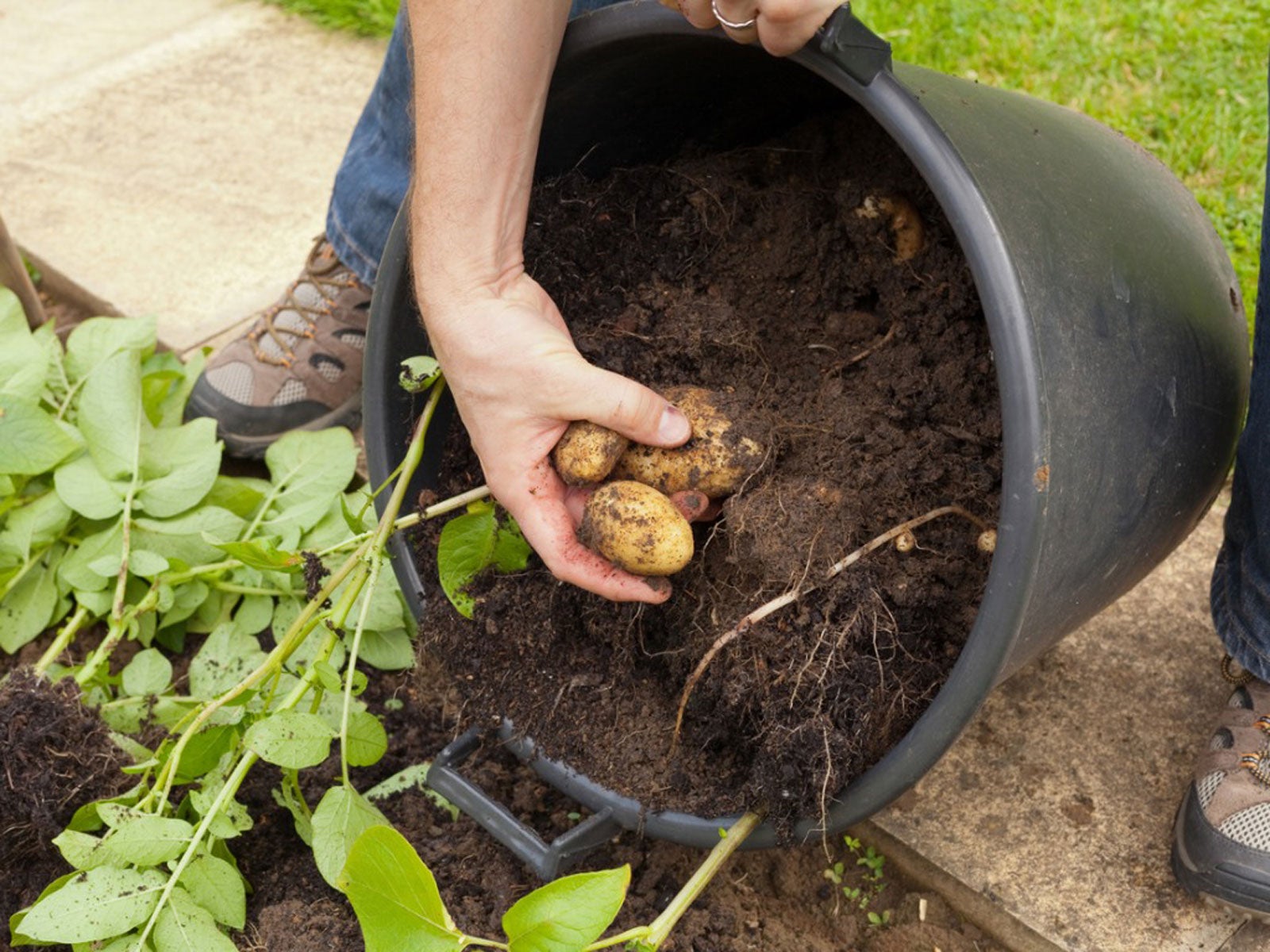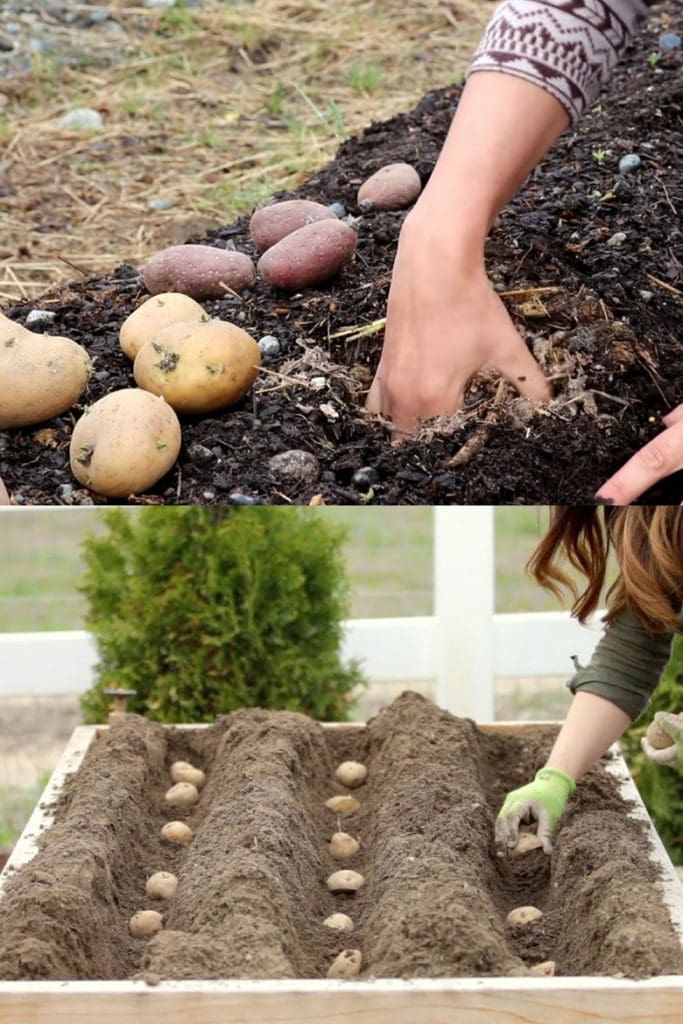How to Grow Potatoes in Containers: A Comprehensive Guide

Growing potatoes in containers is like having your own miniature farm right in your backyard or balcony. Imagine the satisfaction of harvesting fresh, homegrown potatoes without the need for a sprawling garden. Container gardening offers a fantastic solution for urban gardeners and those with limited space. Let's dive into the world of container potatoes and discover how you can turn a simple pot into a bountiful harvest.
Why Grow Potatoes in Containers?
Container gardening offers numerous benefits. It's perfect for urban gardening, where space is often at a premium. Growing potatoes in containers also makes it easier to control the soil quality, moisture levels, and pests. Plus, it's a fun and rewarding hobby that can yield delicious results.
Choosing the Right Container
Selecting the right container is crucial for successful potato growing. Here are some tips to help you choose wisely:
Size Matters
The ideal container for growing potatoes should be at least 12 inches deep and 12 inches wide. This size ensures that your potatoes have enough room to grow and develop. Larger containers can accommodate more plants, but smaller ones are easier to manage and move around.
Material Matters
Containers can be made of various materials, including plastic, wood, and fabric. Each has its pros and cons. Plastic containers are lightweight and durable, while wooden ones offer a more rustic look but may rot over time. Fabric grow bags are breathable and promote better drainage.
Selecting the Right Potato Variety
Not all potato varieties are created equal when it comes to container gardening. Some varieties are better suited for containers due to their compact size and growth habits. Here are a few recommendations:
Early Varieties
Early varieties are ideal for container gardening because they mature quickly, allowing you to harvest potatoes sooner. Examples include 'Yukon Gold,' 'Red Pontiac,' and 'Kennebec.'
Compact Varieties
Compact varieties are perfect for smaller containers. They produce smaller plants but still yield a good harvest. Examples include 'French Fingerling' and 'All Blue.'
Preparing the Soil
The soil is the foundation of your container garden. It needs to be well-draining, nutrient-rich, and free from pests and diseases. Here's how to prepare the perfect soil mix:
The Perfect Mix
A good soil mix for container potatoes should consist of equal parts potting soil, compost, and perlite or vermiculite. This combination provides the right balance of nutrients, drainage, and aeration.
Adding Fertilizer
Potatoes are heavy feeders, so adding a balanced fertilizer to your soil mix can give your plants a boost. You can use a slow-release fertilizer or a liquid fertilizer applied every few weeks.
Planting Your Potatoes
Now that you have your container and soil ready, it's time to plant your potatoes. Follow these steps for successful planting:
Seed Potatoes
Start with certified disease-free seed potatoes. Cut them into pieces, ensuring each piece has at least one eye (the sprout). Allow the cut pieces to dry for a day or two before planting to prevent rot.
Planting Depth
Plant your seed potatoes about 3-4 inches deep in the soil. Space them about 6 inches apart in the container. Cover them with soil and water gently.
Caring for Your Container Potatoes
Caring for your container potatoes involves regular watering, feeding, and monitoring for pests and diseases. Here are some essential potato growing tips:
Watering
Potatoes need consistent moisture, especially during the early stages of growth. Water your container potatoes regularly, ensuring the soil is evenly moist but not waterlogged. A good rule of thumb is to water when the top inch of soil feels dry.
Feeding
As mentioned earlier, potatoes are heavy feeders. Apply a balanced liquid fertilizer every 2-3 weeks during the growing season. This will ensure your plants have the nutrients they need to produce a bountiful harvest.
Hilling
Hilling is the process of mounding soil around the base of the potato plant as it grows. This encourages the plant to produce more potatoes and prevents them from being exposed to sunlight, which can turn them green and bitter.
Pest and Disease Management
Keep an eye out for common potato pests like aphids, Colorado potato beetles, and wireworms. Use organic or chemical pesticides as needed, following the manufacturer's instructions. Also, watch for signs of diseases like blight and rot, and treat them promptly.
Harvesting Your Potatoes
Harvesting your container potatoes is the most rewarding part of the process. Here's how to do it:
When to Harvest
Potatoes are ready to harvest when the plants start to yellow and die back. This usually happens about 2-3 months after planting, depending on the variety.
How to Harvest
Carefully remove the plants from the container and sift through the soil to find the potatoes. Be gentle to avoid damaging the tubers.
Storing Your Harvest
Store your harvested potatoes in a cool, dark place with good ventilation. Avoid storing them in the refrigerator, as the cold temperatures can convert the starch to sugar, affecting the taste.
Conclusion
Growing potatoes in containers is a rewarding and enjoyable experience. By choosing the right container, selecting the best potato varieties, preparing the soil, and providing proper care, you can harvest a bountiful crop of delicious potatoes. Whether you're an urban gardener or just looking to maximize your space, container gardening offers a fantastic solution. So, why not give it a try and enjoy the fruits (or tubers) of your labor?
FAQs
Can I grow potatoes in any type of container? While you can grow potatoes in various containers, it's best to choose one that is at least 12 inches deep and wide. The container should also have good drainage to prevent waterlogging.
How often should I water my container potatoes? Water your container potatoes regularly, ensuring the soil is evenly moist but not waterlogged. A good rule of thumb is to water when the top inch of soil feels dry.
What is the best soil mix for container potatoes? A good soil mix for container potatoes should consist of equal parts potting soil, compost, and perlite or vermiculite. This combination provides the right balance of nutrients, drainage, and aeration.
When is the best time to harvest potatoes? Potatoes are ready to harvest when the plants start to yellow and die back. This usually happens about 2-3 months after planting, depending on the variety.
How can I store my harvested potatoes? Store your harvested potatoes in a cool, dark place with good ventilation. Avoid storing them in the refrigerator, as the cold temperatures can convert the starch to sugar, affecting the taste.
/colorfulpots-56a6704a3df78cf7728deb0e.jpg)

0 Response to "How to Grow Potatoes in Containers: A Comprehensive Guide"
Post a Comment